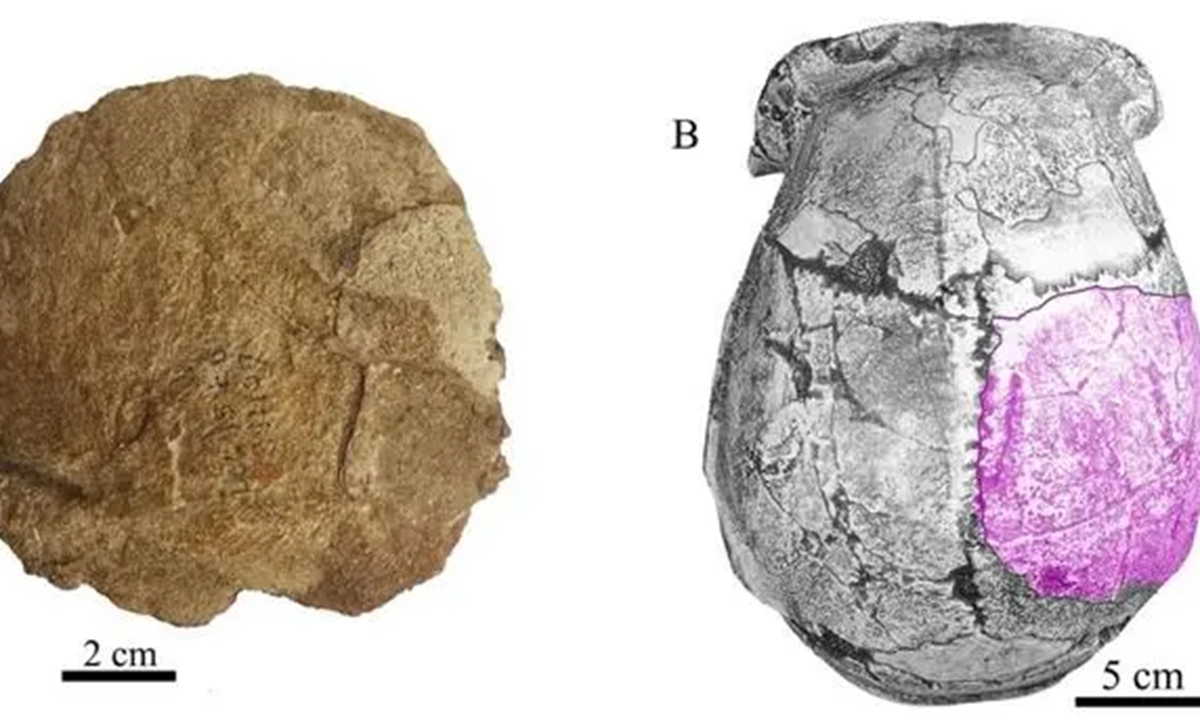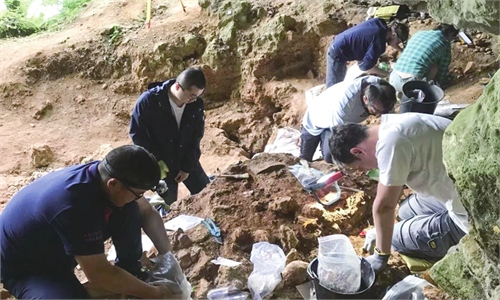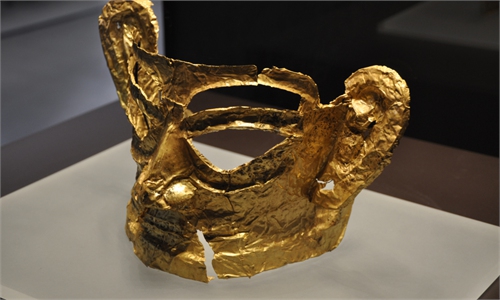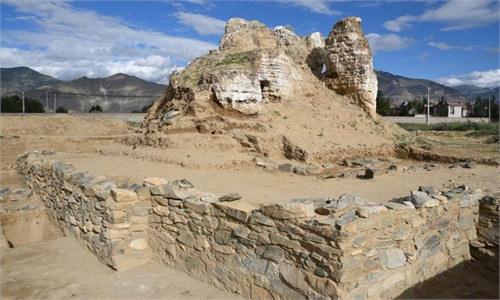ARTS / CULTURE & LEISURE
Human skull fossil discovered at ‘Peking Man’ site, first in 50 years

Photo: Courtesy of the Institute of Vertebrate Paleontology and Paleoanthropology
Among scattered mammal fossils, a piece of human parietal or more commonly known as the skull bone was discovered from the Zhoukoudian Site, a UNESCO listed cultural heritage site on the southwestern outskirts of Beijing.
Identified by researchers from the Institute of Vertebrate Paleontology and Paleoanthropology (IVPP), the new discovery defines the first Pleistocene human fossil found at the site for 50 years.
The Pleistocene human specimen is fully fossilized and shows a yellowish-brown color. It was excavated among a cluster of animal fossils at the site, which was first spotted in 1932 with stone tools and mammal fossils in abundance.
Specific measurements of the 2023 human fossil, regarding its thickness and size, carry similarities to the bone of the site's iconic Homo erectus.
"The age of this parietal fossil is in the transitional stage between Homo erectus and early modern humans at the Zhoukoudian site. It's very rare to find such diverse ancient hominins grouped at different stages of evolution at the same site," the project's leader Wu Xiujie, told the Global Times.
Wu noted that the parietal fossil provides key material for exploring the regional evolution of ancient human physical characteristics at Zhoukoudian.
Also known as Peking Man, the Zhoukoudian Homo erectus is the most "pivotal reference to Chinese anthropological history," paleontologist Chen Youwen told the Global Times.
Prior to the human parietal bone discovery, a fossilized tooth was found in 1973. The 2023 discovery could not have been made without new digital means used in Chinese paleontological research, as the parietal bone was identified by IVPP scientists through CT scanning and 3D reconstruction.
Thomas Stidham, an IVPP researcher from the US, told the Global Times that the CT scanning and computer-based modeling approaches used at this project can encourage scientists to look for more human fossils through combining technological creativity.
"Hopefully the skull bone can help document and refine our knowledge of human evolution in Asia," he noted.
Described by the UNESCO as a site of "exceptional importance," the Homo erectus fossils from Zhoukoudian have always been the important research materials for exploring human evolution ever since 92 years ago, when the first complete skull was discovered.
Generations of Chinese scientists have put efforts into uncovering more at the site. Up to 2023, unearthed human fossils include six skulls, 157 teeth and a large number of bone fragments, representing about 40 Peking Man individuals.
"People may think of the dusty shelves of collections rooms as places where new discoveries aren't made, but in fact, new technologies, new scientific questions and new perspectives from new researchers constantly mine existing museum collections to make great discoveries like this one," Stidham told the Global Times.



